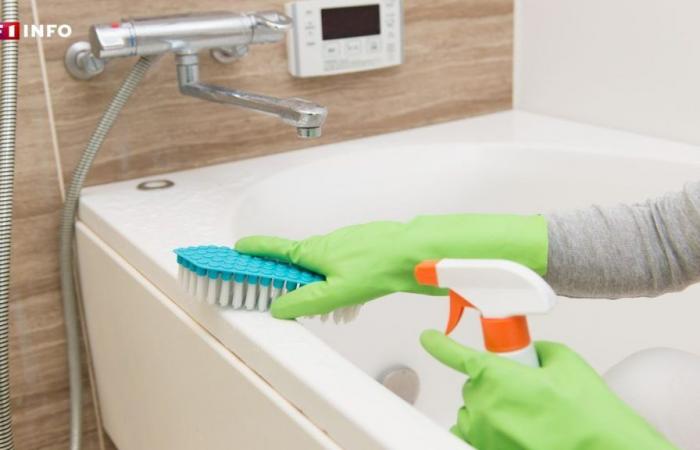According to a recent American study, we live with at least 600 viruses.
Most of them develop in a particular room of our interiors and on certain objects that refer to it: the bathroom.
However, some of these “domestic biofilms” cited by the researchers had never been observed before.
“A curiosity”. This, in their words, is what motivated researchers at Northwestern University, in the United States, to take an interest in the microbes that live inside our homes, as part of a study that quickly led to focus on one room in particular: the bathroom. According to the results, relayed on October 9 in the magazine Frontiers in Microbiomes no less than 600 viruses coexist in this restricted space which nevertheless first and foremost evokes… hygiene.
“If you think about indoor environments, surfaces like tables and walls are really hard for microbes to support. Microbes prefer environments with water. And where is there water ?In our shower heads and on our toothbrushes?explains Erica Hartmann, microbiologist and main author of the study in a press release from Northwestern University, providing another part of the study’s conclusions relating to the objects most likely to be contaminated.
“An absolutely incredible number of viruses”
To arrive at these results, scientists collected samples from 92 shower heads and 36 toothbrushes in American bathrooms. To describe the unique microcosm that each of these objects represents, the authors evoke a “small island”. Verdict: analysis of the samples, based on DNA sequencing, revealed the presence of more than 600 viruses, 314 of which were only detected in a single sample. Note that none of the samples turned out to be entirely identical.
“The viruses present on the shower heads were not on toothbrushes and vice versa”, detailed Erica Hartmann, estimating that the “The number of viruses discovered is absolutely incredible.” And to add: “We have discovered many viruses that we know very little about and many more that we have never seen before. It’s amazing how much untapped biodiversity is all around us. And it’s not You don’t even have to go far to find it, it’s right under our noses.”
Should we be worried?
In detail, it emerges from this study that while the shower head contains bacteria mainly found on the ground and in drinking water, the toothbrush is contaminated by species associated with the human microbiome. In addition to these two particularly infected objects, others are likely to be infected to a lesser extent, starting with towels, razors or even the shower curtain and washcloths and sponges. More generally, the microorganisms identified in this work belong to the family of domestic biofilms which harbor a diversity of microorganisms, including bacteriophages, namely a type of virus which only infects bacteria and which is capable of regulating their population.
Should we be worried about this jungle of viruses in our bathrooms? No, according to Erica Hartmann. “Germs are everywhere, and the vast majority of them will not make us sick,” she explains, adding that it is also not helpful to attack them with disinfectants, as this could lead to them developing resistance which would make them more difficult to treat. “Phages are fascinating, and arguably represent the next frontier in microbiology. It’s better to look at them with curiosity than with worry.” continues the latter, adding that they are only dangerous in the event of proliferation.
-
Read also
“Healthy indoor air is a human right”: a group of doctors demands an “air plan” from Macron
However, Erica Hartmann recommends changing your toothbrush every three months, and cleaning shower heads regularly using soap and water or vinegar.






